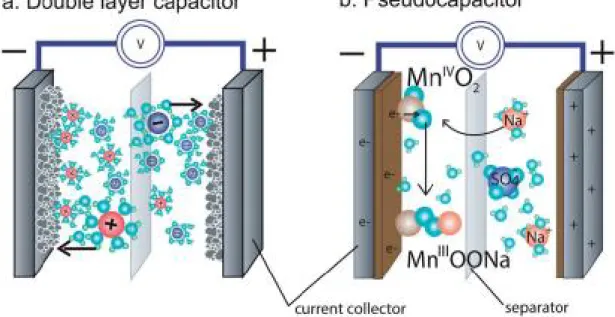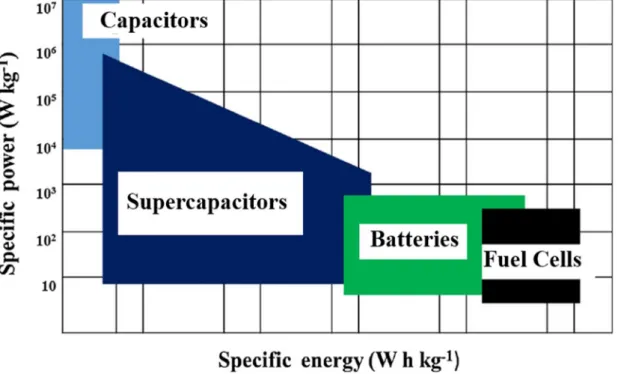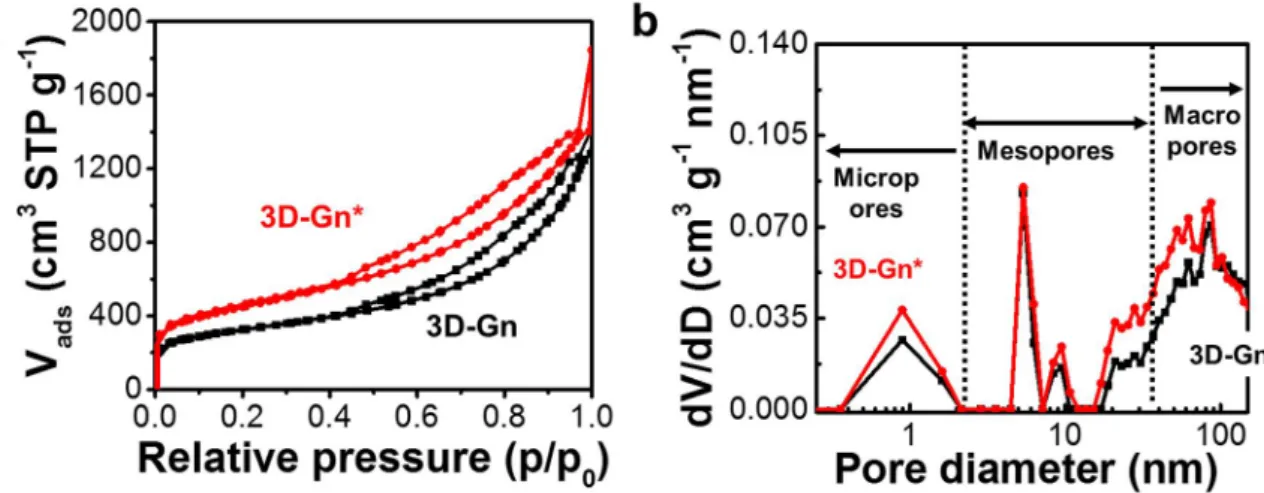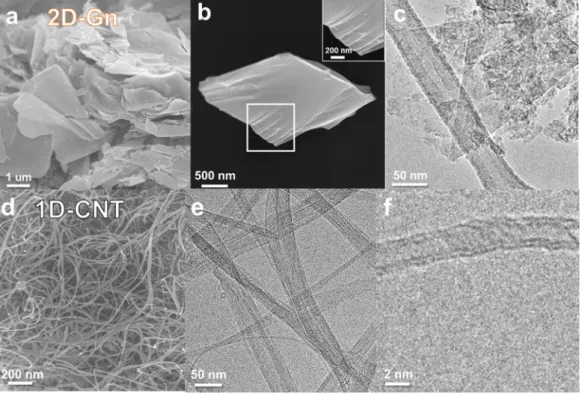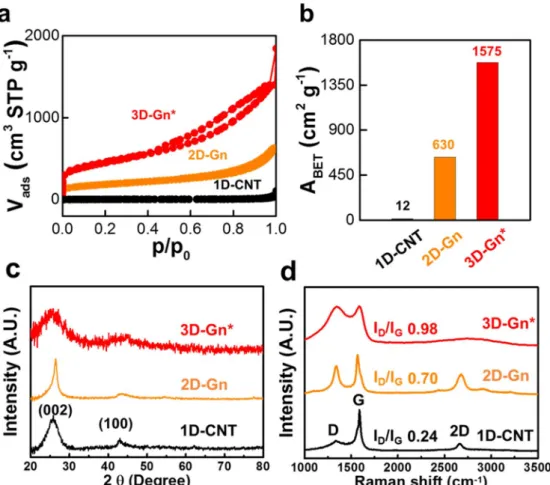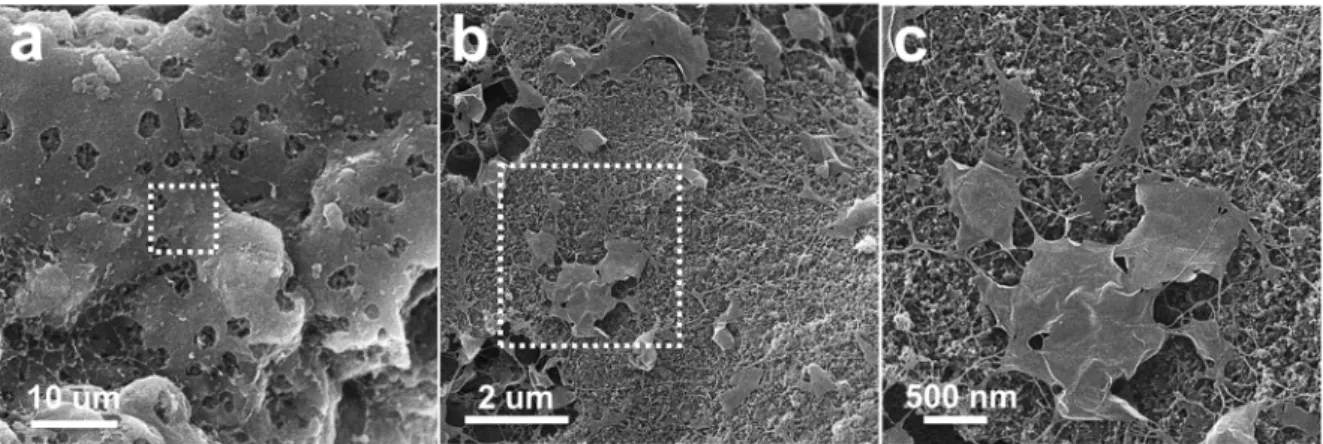The past year has attracted research on flexible energy storage devices that are used in various fields such as wearable devices, switchable displays, electronic sensors, and foldable mobile phones. Storage batteries, such as lithium-ion batteries (LIBs) and supercapacitors or electric double-layer capacitors (EDLCs), are representative devices that can be used for flexible energy storage devices. Supercapacitors have been developed for high-performance applications due to their high power density, fast charge/discharge, and longer lifetime than LIBs.
Flexible supercapacitors and batteries require different properties, such as low weight, good electrochemical performance and high power/energy density. In particular, good mechanical durability, even in folded and wrinkled situations, is a key component in addition to high power/energy density. In this paper, we designed a carbon electrode to ensure the flexibility of symmetrical electric double-layer capacitors by using three different dimensional carbon materials.
Three-dimensional graphene (3D-Gn*) is highly capacitive but poorly conductive, and is used as a platform for electrical double layer formation. As a result, the symmetric EDLC used multidimensional carbon composites anchored to flexible substrates was operated at 3V, ensuring high energy densities even under repeated mechanical loading conditions.
Review of supercapacitors
Carbon materials in EDLC
- Carbon nanotubes (CNT)s in EDLCs
- Graphene in EDLCs
- Mesoporous carbon in EDLCs
The porous structure of 3D-Gn has high surface area to provide high capacitance but low electron conductivity. 3D-Gn*s guaranteed high capacity as active materials and 1D-CNT had active material fixed by anchoring to a polymer substrate. 3D-Gn was prepared by calcining a mixture of carbon precursors on a solid template in the presence of a graphitization catalyst.
Schematic illustration of the manufacturing process for 3D-Gn. 3*+1)D electrode was prepared without 2D-Gn by the method described above. Electrochemically accessible surface area (AEQCM) can be calculated from mass difference (Dm), i.e. the cation mass difference of ions that have participated in the formation of electric double layer (m) between (3*+2+1) D and (2+1) D or (3*+1)D and 1D with the assumption, that cation monolayers were formed on the surface of 3D-Gn*56-57. 2D-Gn showed higher crystallinity than 3D-Gn and had the advantages of high electron mobility along the surface of 2D-Gn.
The (3*+2+1)D composite electrodes were prepared by filtering an aqueous solution that dispersed 3D-Gn*, 2D-Gn and 1D-CNT on the PET-MF/PAN-MF membrane (Fig. 2.7). 3D-Gn* particles and 2D-Gn sheets are anchored by 1D-CNT, and 2D-Gn sheets promote electron conduction between 3D-Gn*s and between 3D-Gn* and 1D-CNT. The (3*+2+1)D composite electrode was designed to fully utilize the surface area by compensating for the contact resistance between 3D-Gn*s and between 3D-Gn* and 1D-CNT.
When the carbon composites were prepared using 3D-Gn* and 1D-CNT without 2D-Gn, the conductivity seriously decreased to 37 S cm-1 and the contact resistance is believed to have increased. Because the introduction of 2D-Gn reduced the contact resistance between 3D-Gn*s, the entire surface area of 3D-Gn could be utilized, and it is estimated that the capacitance of 3D* in (3*+2+1)D increased. The increased capacitance of 3D-Gn* with 2D-Gn and 1D-CNT was confirmed by mass change (Fig. 2.11).
The AEQCMof 3D-Gn* with 2D-Gn was more than twice that of 3D-Gn* without 2D-Gn. It may explain that the presence of 2D-Gn can help the surface utilization of 3D-Gn* and showed improved capacity. Therefore, it can be seen that 2D-Gn helps to reduce the contact resistance between 3D-Gn*s and to use the entire surface of 3D-Gn*. (Fig 2.12).
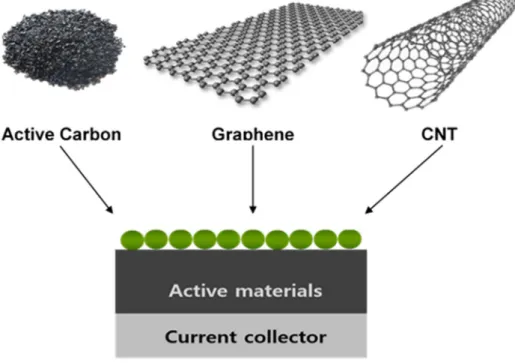
Multi-dimensional carbon composites for flexible supercapacitors
Introduction
The researches on flexible energy storage are important for the development of wearable devices and foldable mobile phones33-40. The flexibility can be provided by the design of the electrode structure, and mechanical properties can also be guaranteed42. Flexible substrates such as carbon cloth, graphene and polymer cloth helped ensure this flexibility43-45.
Nanowires such as 1D-CNT can be anchored to flexible substrates, providing mechanical properties and electrical properties46. Therefore, it is important that flexible supercapacitors guarantee electrical conductivity to improve flexibility while maintaining energy storage performance. In the case of 2D-Gn, this is advantageous from the flexibility point of view, but there is a problem that the capacity may be reduced due to the problem of restacking47-50.
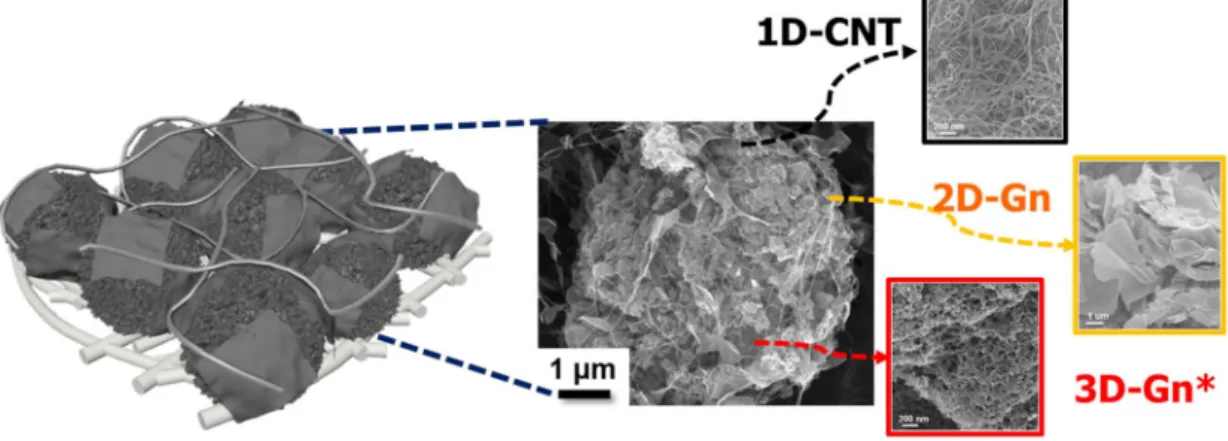
Experimental section
- Materials
- Fabrication of 3D-Gn
- Preparation of electrode and cells
- Characterization
- Electrochemical quartz crystal microbalance (EQCM)
A line electron microscope (S-4800, Hitach, 10kV) and a transmission electron microscope (JEM-2100, JEOL, 200 kV) were used to observe morphological images. Surface area and pore size distribution were measured using a nitrogen physisorption analyzer (ASAP2420, Micromeritics Instruments). An active material loading resonator, a platinum plate, and Ag/Ag+ were used as the working electrode, counter electrode, and reference electrode, respectively.
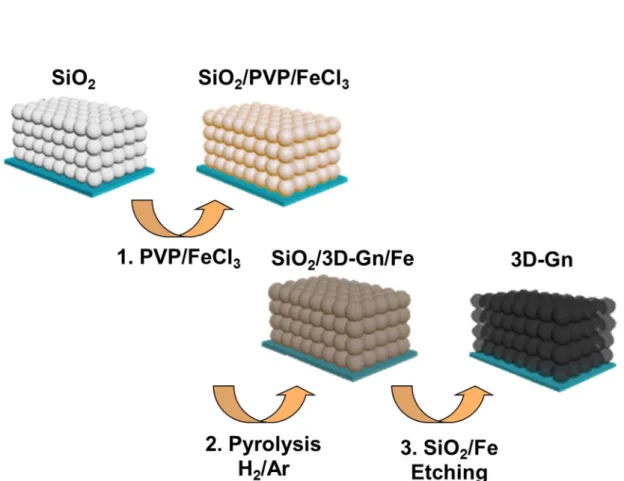
Results and discussion
- Fabrication of multi-dimensional carbon composite
- Capacitance
- Electrochemical analysis
- Flexibility
Characterization of 3D-Gn*, 2D-Gn and 1D-CNT. b) Surface area calculated from Brunauer, Emmett and Teller equation. When the carbon composite including 2D-Gn was made, the conductivity increased again (93 S cm-1) (Fig. Therefore, it was predicted that the introduction of 2D-Gn would compensate the contact resistance by expanding the electron channels between the two fields .
When the potential at the point of zero charge is carried away, the ions accumulate in the electrical double layer of the electrode surface. Thus, the capacitance is directly related to the change in the mass of the electrode during the potential shift. After scanning the potential back, the frequency takes on its initial value at the resting potential.
Electrochemical accessible surface area (AEQCM) was calculated from the mass differences of the adsorbed ions under the assumption that a monolayer of spherical TEA + covers an entire surface area of active materials. The porous structure of the multidimensional carbon composite was analyzed in terms of ions responsible for the formation of the electrical double layer. Since the ions did not reach the bottom of the pores at high frequency, the overall surface area of the pores was difficult to know.
Depending on the size of the pores, the penetration length of the ions was different even at the same frequency. Instead of the vertical line (phase angle = 90 degrees), a constant phase angle line (45 degrees < phase angle < 90 degrees) was obtained at low frequencies. Therefore, the impedance spectrum of the multidimensional carbon composite electrode was fitted to TLM-PSD to obtain pore parameters.
From the perspective of cohesion and/or adhesion strength, the mass change of the (3*+2+1)D and (3*+1)D composite electrode on the flexible substrate and the 3D*|Al electrode was investigated under repeated wrinkling ( Fig. 2.13a). As expected, in the case of the carbon composite on the flexible substrates, it was confirmed that the mass reduction was less than that of the 3D*|Al electrode and did not change even at 1000 times of wrinkling. In the absence of 2D-Gn, severe cracks were found at the 500th and 1000th crumbling that could cause a discontinuity of the carbon mass.
The mechanical durability of the flexible substrate prevented a large increase in resistance under the repeated loading conditions. The increased resistance values of (3*+2+1)D and (3*+1)D did not significantly affect the electrical defects. And the capacity retention at 100th cycle and at 100,000. cycle in the fully folded EDLC cell based on the (3*+2+1)D composite electrodes showed that 92.4% and 71%, resp.
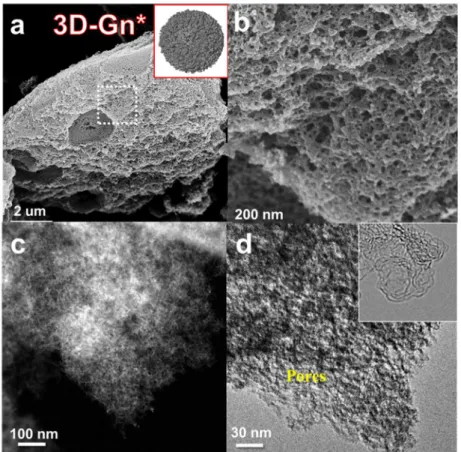
Conclusion
Gallay, Properties and applications of supercapacitors From state of the art to future trends, PCIM, 2000, 1. Chen, One-step fabrication and capacitive behavior of electrochemical double-layer capacitor electrodes using vertically oriented graphene directly grown on metal, Carbon. Lou, Recent trends in graphene-based electrode materials for energy storage devices and sensors, Int.
Grace, Effect of reducing agent of graphene synthesis and its impact on charge storage for supercapacitor applications, Applied Energy. Xia K, Gao Q, and Jiang J et al., Hierarchical porous carbons with controlled micropores and mesopores for supercapacitor electrode materials, Carbon. Yin, Y.-B., Xu, J.-J., Liu, Q.-C., Zhang, X.-B., Macroporous interconnected hollow carbon nanofibers inspired by gold toad eggs towards a binder-free, high-rate and flexible electrode.
Lu, H., Hagberg, J., Lindbergh, G., Cornell, A., Li4Ti5O12Flexible, lightweight electrodes based on cellulose nanofibrils as binder and carbon fibers as current collectors for Li-ion batteries.
